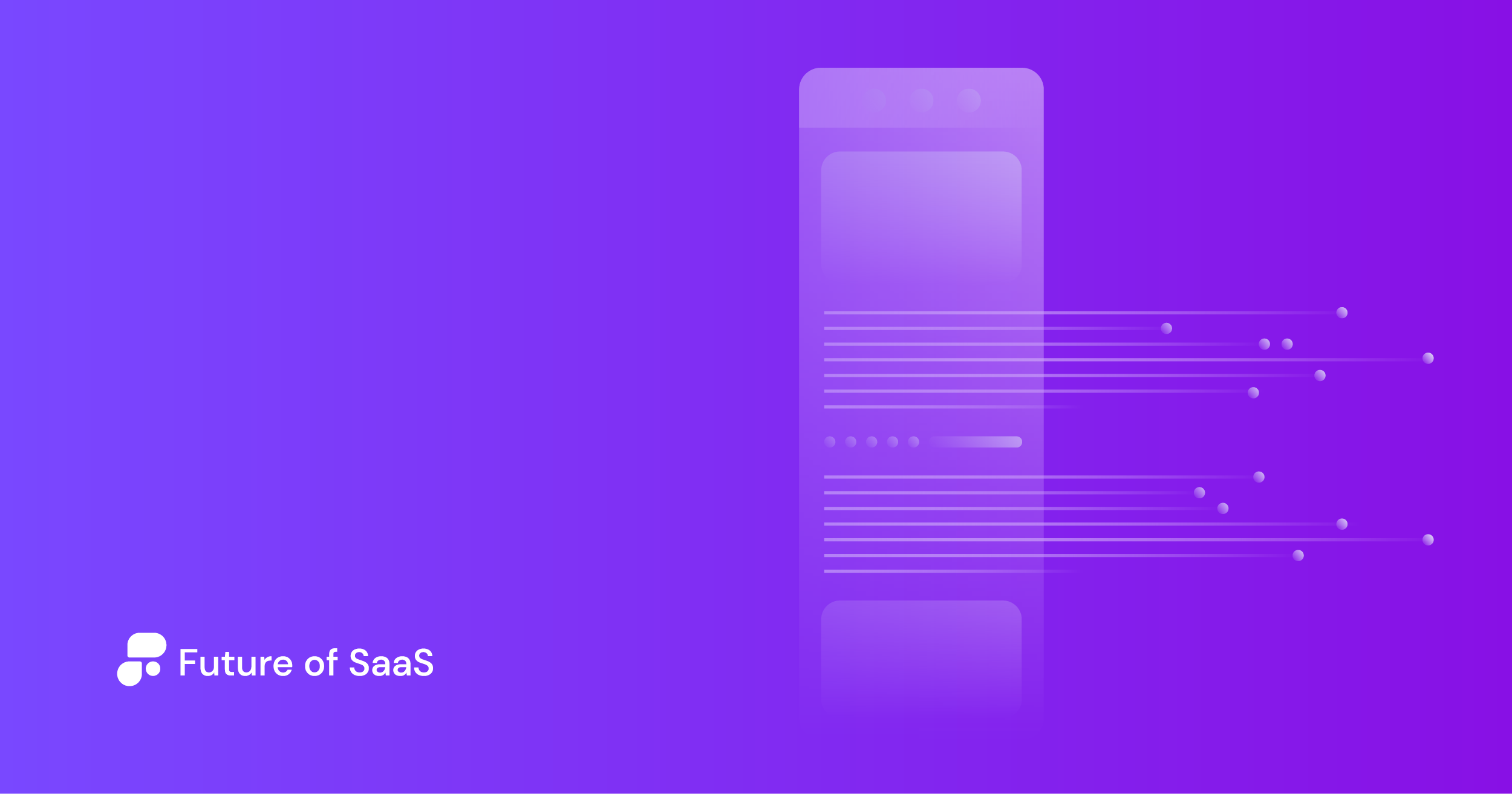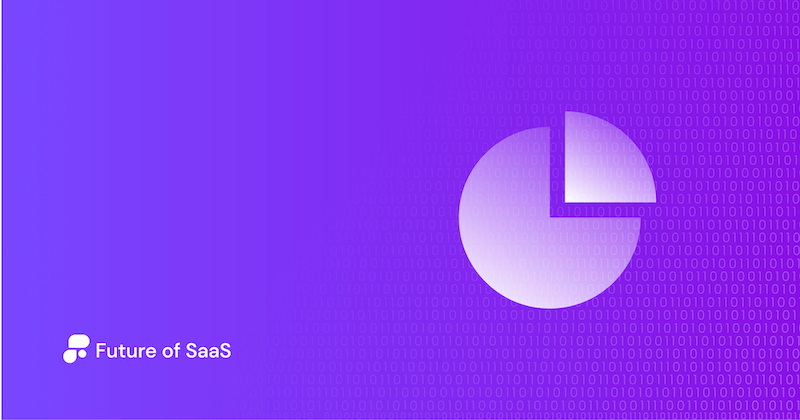Want to know one of the key reasons most SaaS startups fail? That’s right. Lack of financial savvy.
You might have the best product in the world. You might even have a growing customer base. But if you’re not keeping a hawk eye on your finances, you're going to meet some serious stumbling blocks on your way to profitability.
The current SaaS industry is dynamic, diverse – and a little noisy. In a bustling world of top-notch products, good business sense and a skill for finance might just allow you to master the SaaS business model and surpass the competition.
A firm grasp on your SaaS finances can allow you to keep tabs on your current financial performance, so you can make crucial decisions on which expenses further down the pipeline are going to cost you more than they’re worth.

But how do you keep on top of your finances? Well, good finance teams with a knack for number-crunching are going to help, for starters. But all the knowledge in the world won’t help you unless you're aware of the financial metrics you should be monitoring and how you can utilize them.
Here, we delve deep into every one of them and what they can tell you about your business performance.
What is SaaS finance?
In a nutshell, SaaS finance is a broad term used to describe the financial operations of your SaaS company. Ultimately it’s all about tracking the money that you're spending and the money coming in from acquisitions, investments, and finding, so you can have an idea of how you can either maintain or achieve profitability.
Profitability is really the key part of the SaaS puzzle that SaaS finance can guide you towards. So many SaaS companies overspend on resources that ultimately drain their funds so that you can no longer justify its place in your growth-chasing efforts.
To get to grips with your SaaS finances there are two pivotal terms you need to familiarize yourself with: financial modeling and key performance indicators. Let’s define them here.
Financial modeling: When it comes to SaaS, there is no crystal ball. Instead, you can get yourself a top-notch CFO. Your CFO plays the key role of forecasting financial changes along the pipeline, so you can reorganize your spending accordingly, and make the changes necessary to boost your bottom line. See our key resource on hiring the perfect CFO right here.
Key performance indicators: These are the major rubrics that allow you to keep your finger on the pulse of your financial performance. They allow you to get super granular about where exactly your money is coming from, where you're overspending, where you’re thriving, and the most valuable aspects of your business.
The benefits of good SaaS finances
We’ve been over some of the broad benefits of good financial practice, but now let’s get into the nitty-gritty. There are a whole host of questions that plague the day to day operations of a SaaS company. SaaS finance operations can’t answer all of them, but they can help you clear up the following:
- Can you outline the expenses and advantages of transitioning from a licensing payment model to a subscription-based one?
- What's the expense associated with gaining a new customer? What's the expenditure involved in retaining a customer you already have?
- What can you hope to gain from acquiring a new subscription?
- How responsive is your company to financial fluctuations at present?
- What’s the present valuation of your organization?
- What are the most apparent alterations your organization can implement to enhance its financial standing?
These questions are fundamental to your growth efforts – the spending vs. cuts you should be considering to optimize your performance.
SaaS companies don’t want to put out fires all the time, reacting to one crisis after another. You want to be able to plan for the future and implement long term strategies. This is the gift a solid SaaS finances operations strategy can offer you.
What are the key financial models used in SaaS?
In the world of SaaS, there are some key financial models that the top companies use in tandem to stay on top of their ingoings and outgoings. Let’s break them down here:
Balance sheet
Your balance sheet paints a vivid picture of your company's assets, including things like subscriptions, licenses, patents, and other digital goodies. It also covers the company's debts and its overall equity. If your company is hemorrhaging capital, this may give you a head start on where you should start making cuts and which valuable assets you need to invest in more.
Income statement
Very simple: it shows you how much money the company made and what it spent over a period of time. If you haven’t quite reached your targets for the year, this can give you key insights into why, and how you can course correct for the future.

Statement of cash flows
Here, you can see how much cash moved in and out of the company and sort all these cash movements into categories. You need to have a firm handle on where you're winning and losing.
Accrual accounting
This is all about recording revenue earned and expenses incurred in the company's books, no matter when the cash actually flows in or out. Think of it as a real time financial tracker. This stands in contrast to cash basis accounting, which only logs revenue when you've got the cold, hard cash in hand for goods and services. This method is also often referred to as revenue recognition.
With accrual accounting, you're not just seeing the dollars roll in – you're getting a real-time, live-action view of your cash flow. Imagine being able to accurately forecast your financial future, helping you project those all-important reports down the line.
Financial modeling for the future
Now, after getting a handle on where things stand, the company has to look ahead and predict its future. This involves guessing things like how many new users or subscribers you'll get, how many will churn, and how much cash you can expect to rake in from each user.
Of course, these predictions aren't always spot on, but a good financial model can help you try out different scenarios. Ask yourself these questions:
- What if you doubled your subscribers?
- How would that affect your bottom line?
- What if you spent more on customer retention, would that give you a greater chance of becoming profitable?
Are there certain resources that aren’t bringing value and need to be trimmed? Financial modeling can give you a snapshot of all these factors.
Sensitivity analysis
This is the "what-if" game of finance. It helps you figure out how changes in one thing will affect something else. Your SaaS company is a well oiled machine and a misplaced screw can bring the whole thing down.
Discounted Cash Flow Valuation (DCF)
This method considers the value of all the cash the company expects to get in the future, but it adjusts for the fact that a dollar today might be worth more than a dollar tomorrow. The subscription model in SaaS often makes these cash flow predictions pretty straightforward.
But why bother with all this financial modeling? SaaS finance is all about difficult decision making. Making difficult decisions involves weighing up all the various risks and possible impacts of possible decisions.
No one can predict the future, but we can make educated speculations, and SaaS finance operations are a pivotal factor in this.
SaaS finance: the major metrics you should be monitoring
First, let’s start with your most standard – but possibly most crucial – metrics.
1. Annual recurring revenue(ARR)
Companies that sell yearly subscriptions rely on this metric because it tells them exactly how much money they can bank on year after year.
In the world of SaaS, ARR isn't just about subscription fees; it also covers extra goodies your company provides. Think of things like product installation, training sessions, and maintenance contracts – they're all part of the ARR package. It's the full financial picture that keeps your SaaS business on the growth track.
2. Monthly recurring revenue (MRR)
And if you’re offering monthly subscriptions, you’ll want to be aware of your monthly recurring revenue. While ARR can give you a picture of your overall company health, MRR will give you valuable insights into the momentum you’ve been growing with, allowing you to make adjustments and pivot in order to hit your broader goals.
3. Monthly users
In order to get the most value from your customers, it goes without saying that you have to know exactly how many people are using your product month to month.
Important note: For many SaaS businesses, especially those who offer a free package, your number of monthly users can be quite different from the number of paying customers. A major hurdle that many SaaS companies face is that their free user numbers tower over their number of paying customers. They’ll try to show these users the value of their premium packages to have a better chance of a successful upsell.
But before you do that, you need to know exactly how many users you have and, more specifically, how they’re engaging with your product and what their pain points are.

4. Churn rates
Simply put, this is how many customers/users are leaving your product or service. Churn rate can indicate that there’s a crucial component missing in your product, or can simply indicate that something is going awry with your marketing efforts. You might have a really great product, but maybe the message isn’t getting out there. Are your customers overlooking valuable features in your product?
So many questions are raised by a declining churn rate, but you need to know there’s a problem before you can try to address it.
5. Revenue per user
Gaining insight into the revenue generated by each user can simplify the decision-making process when it comes to expanding, entering new markets, and reaching out to consumers. It can also help you segment your customers into groups. Which customers are bringing you the most value, and which ones should you be putting more time and effort into?
Sometimes, a SaaS company might decide that a certain kind of customer doesn’t really fit into their ICP at all, i.e, they’re not likely to need the features that your product offers.
6. Customer acquisition cost (CAC)
The cost of acquiring new customers can be significant, and you need to know exactly how much it’s costing you so you can weigh up whether it’s actually paying off. You’ll always need to dedicate a certain amount of money to customer acquisition, but the most costly method is not always the most effective.

7. Customer lifetime value (CLTV)
Customer lifetime value gauges the expected earnings a business can anticipate from an average customer throughout their time with your company. Once you have accurate profiles of your customer types, CLTV can help you determine which profiles bring in the most revenue long term.
8. CLTV:CAC
Fortunately, there’s a very clear metric to determine just how much value your customers are providing, and that’s CLTV:CAC (their lifetime value vs. their acquisition cost).
This gives you a clear indication of exactly how much value customers are providing versus how much it’s taking to acquire them. If you have a whole load of free users who are bringing in very little revenue to your org, for example, it may be time to shake things up a little.
9. Customer payback period
Shows how long a customer must stay for you to break even. Companies are on a mission to reduce this as much as possible. The shorter the payback period, the healthier your company is.
10. Market size
Some SaaS companies take the horizontal approach, meaning they target as broad an audience as possible, while others take the vertical approach, meaning they target a more niche market.
Marketing is costly, and the size and nature of the market will determine the cost. It stands to reason, then, that you need to have an accurate picture of your market size to inform strategic planning.
11. Discount rate
The discount rate, in simple terms, is the key to unlocking the current value of future cash flows. Companies use it to figure out how profitable a project will be over time, which they call the net present value.
To set the discount rate, they consider some important factors like inflation rates, the level of risk involved, and what they might be giving up by choosing this project instead of something else, also known as the opportunity cost. It's all part of their strategy for making informed financial decisions.
12. Net profit margin
In the grand scheme of things, your enterprise came into being with the ultimate aim of turning a profit someday. Even if it takes a few more years to break even, the net profit margin should always be on your radar as a goal to strive for.
13. Unit cost
SaaS unit costs can encompass a variety of aspects, like feature expenses, customer-related costs, product-related expenditures, message costs, or even team-related expenses.
It's crucial to identify the unit metrics that matter most to your business and understand how they connect to your cloud expenses. This knowledge empowers your team to make engineering decisions that not only enhance your product but also ensure profitability.
14. Cost of goods sold (COGS)
This gives you an idea of how much it actually costs to produce your product or service. Although it can be tempting to have a ‘no expense spared’ approach to your SaaS product, it’s possible that you may need to isolate the features that bring the most value vs. those that seem like nice-to-haves, but are costly and don’t lead to any revenue.
Bonus: Top software solutions for SaaS finance
Forecasting and drawing analysis from data is not easy, and even with the best talent in the world, we can all still make mistakes. Luckily, the modern world offers many nifty software solutions to make the number crunching simpler.
Let’s take a look at some of the tools available to you.
1. FloQast
FloQast provides a cloud-based accounting workflow automation that's tailor-made for accountants. It seamlessly integrates with your ERP, general ledger, Excel spreadsheets, and various other tools to boost your book-closing process.
Whether you're a giant corporation or a smaller, rapidly expanding business, you can tap into its renowned user-friendliness.
2. CloudZero
Cloudzero's cloud cost intelligence platform empowers SaaS companies to gain precise insights into how their AWS expenses directly impact their unique features and products.
Think of it like a roadmap that connects cloud costs to specific products, features, development teams, and more. This, in turn, allows both engineering and finance teams to unravel unit costs, such as the cost per customer.
3. Numeric
Numeric is revolutionizing one of the vital aspects of accounting - the month-end close process. Their platform seamlessly syncs up with your general ledger in real time, simplifying repetitive tasks like recurring workflows, reconciliations, and variance analysis.
Numeric is on a mission to empower finance and accounting teams, regardless of their size, to attain a seamless and ongoing closing process. It's all about making your financial operations run smoother and more efficiently.
4. Airbase
Airbase is your go-to solution for managing expenses, fine-tuning your spending request and approval processes, all while cutting down on costs and beefing up your defense against fraud.
This handy tool doesn't stop there; it comes packed with real-time monitoring, robust reporting, and analytics capabilities to keep your financial operations on point. Plus, it plays well with popular accounting platforms like Sage Intacct, QuickBooks Online Advanced, NetSuite, and Xero, making it a versatile ally for your financial management needs.

5. Chargebee
This software is your financial team's trusted companion, granting them complete command over the entire journey of recurring revenue. It covers all the bases, from sending out invoices that align with customer contracts to handling cash collections, recording transactions, and staying on top of accruals. It's the ultimate tool for wrangling your subscription-based revenue, from start to finish.
Wrapping up
Having strong financial operations is an indispensable part of your SaaS strategy. If you want a shot at keeping track of your current performance, planning for the future, allocating resources appropriately and having a realistic, viable plan for growth, it’s a no-brainer: you have to get to grips with SaaS finance. So, get your metrics in order, formulate financial models, and start your long-term financial plan today.
Can't get enough of these SaaS insights? Why not sign up for exclusive insights from some of the leading minds in SaaS with a Future of SaaS membership?



